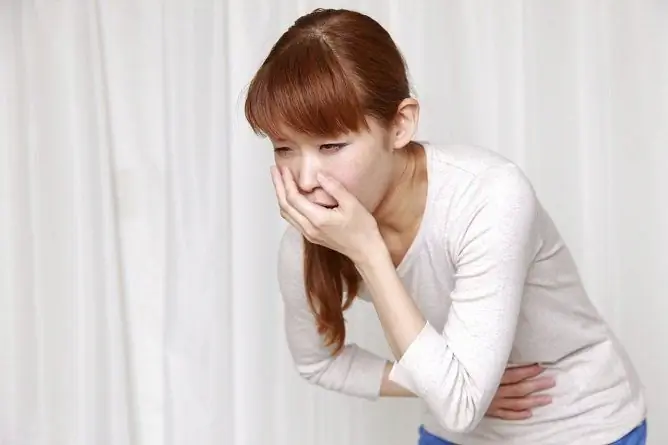- Author Rachel Wainwright [email protected].
- Public 2023-12-15 07:39.
- Last modified 2025-11-02 20:14.
Tooth trauma

Trauma in the medical sense is a violation of the integrity of bone or muscle tissue. Dental injuries are classified as acute or chronic. They are observed in people at different ages, but, of course, children are most often affected by these disorders. This fact is explained by the fact that childhood is the most active period in a person's life. At the same time, the instinct of self-preservation and the soft structure of bone tissues have not yet been developed in children. Teeth injuries in children are most often observed at the age of 1-3 years (the most common tooth dislocation) and during the eruption of permanent teeth (at the age of 7-12 years).
Tooth injuries are classified into:
- Chronic dental injuries (most often associated with a person's professional activities). They are caused by work in industries with a high content of acids and alkalis, as well as bad habits of people (holding a mouthpiece, pipe or pencil in the teeth, biting threads, etc.) Chronic dental injuries are characterized by the formation of defects (patterns), erasure of the cutting edge, erosion.
- Acute tooth injuries. Acute tooth injuries in 30-40% of cases cause the destruction or complete loss of the front teeth in children. The causes of acute dental trauma in children are as varied as everything the child does. It can be games, sports, just pampering at school. Lead to acute trauma to the teeth of adults and children and falling on hard objects or surfaces, impacts, injury from hard parts of objects, etc.
Classification of dental injuries
Tooth bruises are mechanical effects on a tooth that do not lead to a violation of its integrity. May be accompanied by pulp hemorrhage due to rupture of the neurovascular bundle. The child's initial complaint is of mild biting pain. When diagnosed, pain is revealed when tapping (percussion), the mobility of the injured tooth is usually insignificant
Treatment includes anti-inflammatory procedures, exclusion of an injured tooth from occlusion (bite), a sparing diet and rest
Tooth dislocation (traumatic dystopia) - characterized by displacement of the tooth relative to the hole. This occurs due to stretching or rupture of the periodontal and damage to the root of the tooth of the walls of the hole. An injured tooth can change its position: towards the adjacent teeth, towards the oral cavity, turn around the longitudinal axis, sink into the bone tissue
Treatment of dental trauma in the form of "dislocation" is traditionally performed by applying a splint-brace or splint-splint for fixing the injured tooth with the surrounding 2 - 3 teeth. Further treatment is prescribed by a doctor depending on the degree of tooth injury. Mandatory anti-inflammatory therapy.
Teeth injuries in children in the form of dislocation are most often observed in the upper jaw at the site of incisor placement and are accompanied by acute pain. In case of complaints of pain, an urgent visit to the dentist is necessary.
Loss of a tooth occurs due to the rupture of the periodontal tissue, the circular ligament. It is characterized, of course, by the absence of an injured tooth, soft tissue swelling, and bleeding
For the treatment of this tooth injury, depending on many reasons (which tooth is lost (milk or permanent), what are the consequences for soft tissues, bones and holes), the doctor prescribes treatment, which includes mandatory anti-inflammatory therapy and hygiene procedures. Subsequently, prosthetics of the lost tooth is possible.
Fracture of a tooth in the area of the crown - characterized by breaking off the enamel of the tooth, breaking off the crown within the dentine or breaking off the entire crown
When the crown is broken off in the dentin area or the enamel is broken off, complaints from a child can come only for the presence of a visible defect, since this type of dental trauma in children is not accompanied by pain. If a tooth fracture occurs in the dentin region or the entire crown, then it is accompanied by pain when the temperature changes (taking cold or hot food), and, accordingly, the child's complaint about pain, discomfort (a sharp edge that scratches the cheek or tongue).
Methods for treating this dental injury are prescribed by the dentist after determining the severity of the injury and the possible consequences. This can be both grinding of sharp edges and the use of filling materials. Until the removal of the damaged part and installation of the prosthesis. That is, the doctor's decision depends on the consequences of the tooth injury.
Tooth trauma in children and adults can take anywhere from a few days to several months. In some cases, treatment is extended for one to two years. It all depends on the severity and time to see a doctor after a dental injury.
The main task of parents is to systematically monitor the condition of the child's teeth. Children may not pay attention to the received injuries of the teeth, if they are not accompanied by painful sensations, which can subsequently lead to certain complications. Therefore, parents - be careful if you are interested in the state of health of your child, in particular, his smile.
YouTube video related to the article:
The information is generalized and provided for informational purposes only. At the first sign of illness, see your doctor. Self-medication is hazardous to health!






